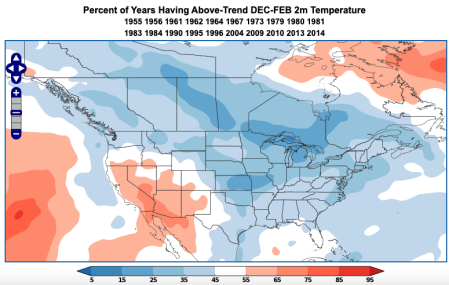
raindancewx
-
Posts
3,767 -
Joined
-
Last visited
Content Type
Profiles
Blogs
Forums
American Weather
Media Demo
Store
Gallery
Posts posted by raindancewx
-
-
La Nina / La Nina-ish winters that are cold West and then go immediately to an El Nino the next winter are pretty rare. Not convinced we get an El Nino just yet, but it's probably the plurality outcome at this point.
Clear cut examples are 1938-39, and 1971-72 since 1930. Debatable to include 1996-97, 2001-02, and then 1968-69, 2014-15, 1951-52, 1957-58 as anti-logs.
Something like this?

This is actually a pretty harsh winter for most of the US even though it only looks cold in Oklahoma. December and January are pretty cold in the East, it's just offset by blazing heat in February-March. As these are east-based El Ninos that turn into Modokis late, you get the cold early in the East (as it will be trending colder by Peru like in a strengthening La Nina), and then everybody flips warm by March when the El Nino collapses cold.

-
In a global sense, using 1940-now ERA data from the Europeans, the cold West / hot East really stands out. I definitely had the right idea with a harsh Western winter. California is about to get nuked with snow again too. It's always interesting to look globally and see the "correlation points" in Asia - typically if the Indian subcontinent south/east of the Himalayas is hot, so is the Eastern US, and if Central Asia up to Kamchatka/NE Asia is cold, so is the Western US.
-
On 10/7/2022 at 6:34 PM, raindancewx said:
https://www.scribd.com/document/599203054/2022-23-Winter-Outlook
Some notes:
- Much wetter winter than last year. I didn't see a signal for huge snow anywhere - I had the coldest areas looking dry, and the wettest areas looking warm. I do think the Midwest will do well for snow in the off-season - November & March. Any big systems for the NE US are likely late January-late February - just a guess though.
I had mentioned the NE not doing well for snow either in the urban corridor. Also, had the NW dry in my outlook. I'm fairly happy with the results - I tried to incorporate the volcano into the forecast.
-
Eh close enough
-
Heading into this winter, my research indicated that volcanic winters tend to precede extremely harsh weather in the West during seasonal transitions. That's largely played out quite well this season, with October and the current period seeing extraordinarily powerful systems in the West. There is some tendency in the second volcanic winter for craziness as well, but at different times and locations.
The winter of 1932-33 was extremely harsh in the West following Cerro Azul (VEI 5) in April 1932, and also Volcan Fuego in Guatemala in 1932 (VEI 4). Fuego also erupted in Fall 1974 (VEI 4) ahead of a harsh winter in the West, and again in 2018. I used 1984 as well, in light of the volcanic idea.
March 1993, 2019, and some of the other Marches with extraordinary low pressure readings are in the mix both this year and next year - hold on to your butts.
-
 2
2
-
-
If I did my winter forecast correctly, you guys may actually have as many as three of these in March before you flip very warm again. Obviously, I have no idea if they'll all be snow. Good luck.
-
 6
6
-
 1
1
-
-
My gut says no El Nino or La Nina next winter. I'd like to be wrong though.
In recent La Nina to El Nino transitions, the SOI has gone pretty negative in February or March. Not gonna happen this February.
My winter outlook called for a very active March, with very powerful storms entering the West as the catalyst. We seem to be trending that way. Check out this bullshit in ABQ today -
-
I'll verify my snow forecast nationally once March is over. Most areas will be done with snow by the end of March.
March should be a wild month. I don't really expect it to be particularly cold overall. But I'm expecting 2-3 blizzards, and 2-3 pretty major tornado outbreaks. A lot of cold dry air will still be present in the northern and western US entering the month, but the east will be muggy/hot. Expecting some very powerful storms to run along those gradients.
-
 1
1
-
-
I didn't have the monthly progression right. The severely warm/cold periods I had forecast in Nov-Feb, have shown up, but at the wrong times. But the seasonal look is going to be close. Keep in mind, it's been cold in the West in Feb, and that will continue through the 28th. Once February has the weighting of 1/3 of winter instead of 1/6 you'll see the relatively cold area expand. The conversions from K to F on the second map work out to a -7F to +7F range in increments of 2F as the conversion from K to F is 9/5 x the K value. If I had excluded the two hurricane/SST and the timing antilogs (2004, 1995, 1962) the cold and heat in the West/East would have been dulled. So that process was kind of a wash - it correctly added much more warmth to the East but also likely too much cold to the West. Locally, in the context of the past 30 years, this is like a -1F to -2F cold winter, longer term, more like average to -1. The wetness I mentioned relative to last year has also verified - this has been a very wet winter nationally. We've already reached average winter precip totals with 1/6 of winter left, and likely 1-3 rain or snow events left by month end.
-
 1
1
-
-
I'll just leave this here.
-
 2
2
-
-
Anti-2005 (one of my three winter analogs) is still holding up:


Look at the Nino zones, Indian Ocean, SE Atlantic, etc.
-
Impressive how much colder the Indian Ocean has been year/year with this La Nina. The volcano likely helped destroy the warmth east of Australia too.
My idea from October was a wetter than average / colder than average winter in the Southwest. That's pretty likely to verify in at least some spots despite the La Nina. The localized +5F winter for New England may also verify.


-
I say it every year, but low ACE is correlated to low snow totals in the NE US.
Here is a look at the latest first snowfall dates in Philadelphia, limited to after Christmas only, since 1960:
1965-66, (27.4 total)
1974-75, (13.6)
1990-91, (14.6)
1991-92, (4.7)
1992-93, (24.3)
1994-95, (9.8)
1996-97, (12.9)
1997-98, (0.8)
1999-00, (12.5)
2001-02, (4.0)
2006-07, (13.4)
2015-16, (27.5)
2021-22, (12.9)
Average for no snow through 12/25: 13.7", range: 0.8" to 27.5".
La Nina average for no snow through 12/25 is about the same.
-
 1
1
-
-
Here is how the -NAO worked out for H1 December v. long-term correlations. It's not particularly dominant when other factors get involved.
Anyway, I've been impressed with 1984 as a match for the cold season so far. You may want to look at what happens later in 1984-85 on the off chance that it continues to hold as a good match for a while. I'm fairly sure I mentioned 1983 was a similar match on my NAO scoring system, and that year had about a 2-week -NAO period in late Nov or early Dec if memory serves, before reverting to slightly positive for most of December. It's been similar in that sense.
-
Still looks like 1984 to me. I'm not a huge fan of that year, but it's the best match I've found.
-
You do copy everyone. I saw you show my exact November image of spectacular Plains warmth in your thread when you were doing you outlook, only to finally realize a week before the cold coming it was unlikely to verify as I had it, and then you were complaining "oh shit my analogs aren't right".
Jesus, if this is what you're hoping for with the -NAO mattering, god bless all of you. It sure looks like a +NAO pattern to me, when the West tends to be cold. That's my only point. The PNA / NAO interactions kind of wash out year to year over which is more dominant early on.




It's not like this is changing in the long-run.

-
 1
1
-
-
You're kind of missing the point aren't you? I'll gladly take whatever the NAO does if December verifies cold in the West again. I could very well be wrong about the NAO/AO in December, but it's kind of an irrelevant temperature signal for most of the US at this point in the year. I would have liked November to have been warmer, closer to what I had, but ultimately, the eastern half of the US was warm, western half was cold, rather than 1/3 v. 2/3 split. It's actually kind of amazing that the mid-month cold snap wasn't enough to fully wipe out the heat honestly.
I'm assuming you're concerned because you copied me again? I've not read your forecast, but I'm 99% certain you put the West colder than the East in December, given that I did, and your comment here.

You guys all do this stuff backwards to me - it's much easier to come up with temperature profiles in certain areas of the country and then try to figure out the teleconnections from that. But you guys do the opposite. The Cold West idea for me assumed a cold West would probably have a +AO/NAO, especially since that was favored by the ACE stuff. If we get a cold West, and it wasn't via the +NAO/+AO, I'm still good with it. The signal for ACE in the West is cold - it's there for other teleconnections, but it's really much stronger as a cold signal than anything else statistically.

Certainly doesn't look warm West like in 2010 or 1995 with the -AO/NAO in those years.


-
 1
1
-
-
This is why I went warm in November in the Plains/Midwest. Most of the analogs I had flipped warm late month central/east after a big cold snap mid-month. I suspect the greatest extent of the cold by severity and area was on 11/22 this month - but we'll see. GFS has pretty warm temps for the next week in the general area of red below.
The final weeks of Nov 1984, 2011, 2016, 2020 in my analog set are all pretty warm, with 2012/2021 as near opposites, and then the -high ACE years also favoring the look above generally.
-
 1
1
-
-
Isn't 1995 one of the warmest Novembers on record in the West? It's honestly been f-cking freezing here. It's like 50/50 this is a top 20 cold November locally for the past 100 years honestly. Coldest November month to date here since 2000. Still ~5F warmer than 11/2000 though.
I have a hard time seeing how 1995 is anything like this year really.
It's not like the cold is forecast to retreat out here anytime soon either.


-
Not a lot of week long, nationwide severe cold this part of November in La Ninas if you look. But I did mention 1984 as probably the single best match for the winter...and sure enough - pretty damn cold in the matching period nationwide. Florida is in its own little world, but -3 or colder nearly everywhere in Farenheit. You can sort of see that the origin source of the cold in 1984 is NE of where it was this past week.
I'm up to 12 days in ABQ in November that finished at least 5 degrees below normal. So the low ACE correlation to cold snaps in the West is holding up rather well. For reference, all of Nov 2017-Feb 2018 had only 10 cold days (10/120) v. (12/22) in 2022-23.
-
 2
2
-
-
Nov 16-Dec 15 peak idea for this event still looks plausible to me.
Only 25.9C at the surface in Nino 3.4. Even using the absurdly warm baseline in the weeklies, that's a pretty weak La Nina as we get close to when these things peak.
-
 2
2
-
-
-NAO period that I mentioned in my October forecast for November is coming now. Should last about two weeks.
NAO has no real correlation to temperature in November in most of the US, so this -NAO period should actually coincide with the Plains warming up, at least relatively.

-NAO
+NAO
-
Average high in Albuquerque in La Nina November is about 59.3F, around +2F against the 100-year average.
The cold November La Ninas are an interesting bunch, if we do manage to hold off the warmth that should come back late month.
56.3F or colder highs in La Nina, 1931-2021
Nov 1938, 1956, 1964, 1984, 2000 (1938 also had record early Nov NE US heat, btw).
-
I see people referring to 2010 November as a decent match to this November. Is 2011 really that off though practically? The timing is off a bit - but my scale below is -7 to +7 in increments of 2F, so it's not like I picked some near average period. I've not been a fan of 2011 for precipitation patterns at all, but it's definitely been a strong match for temps most of this year.

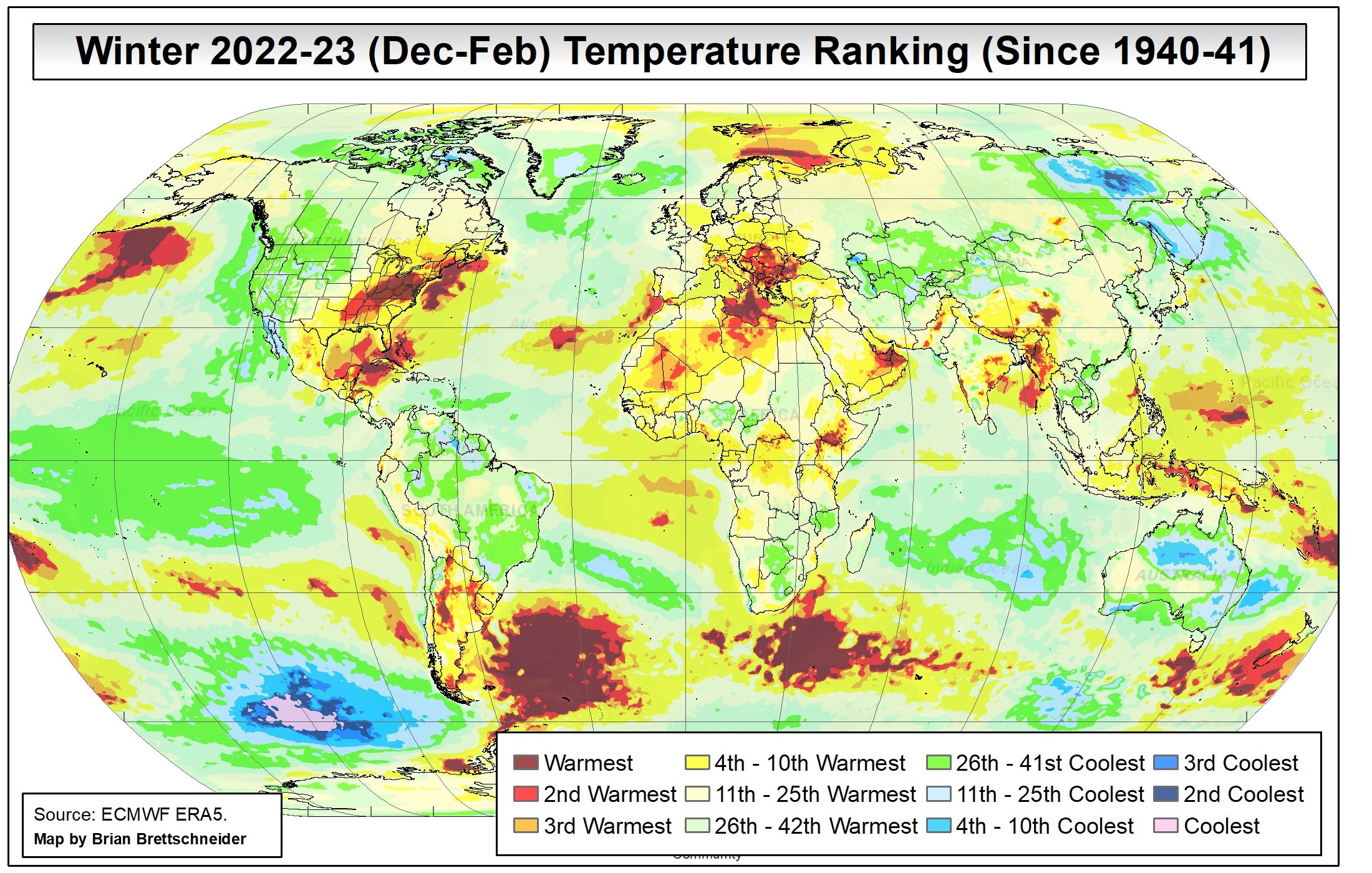
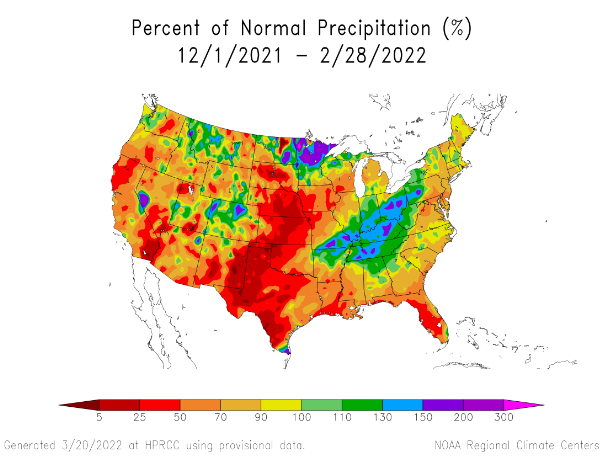

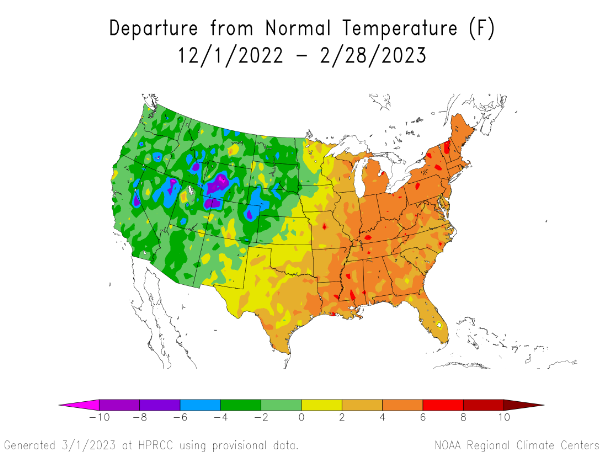

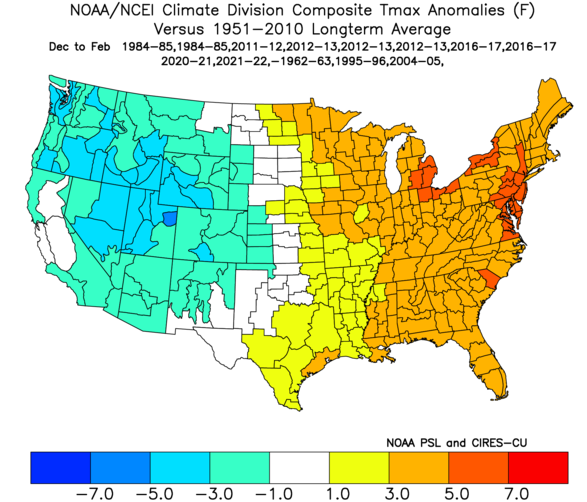
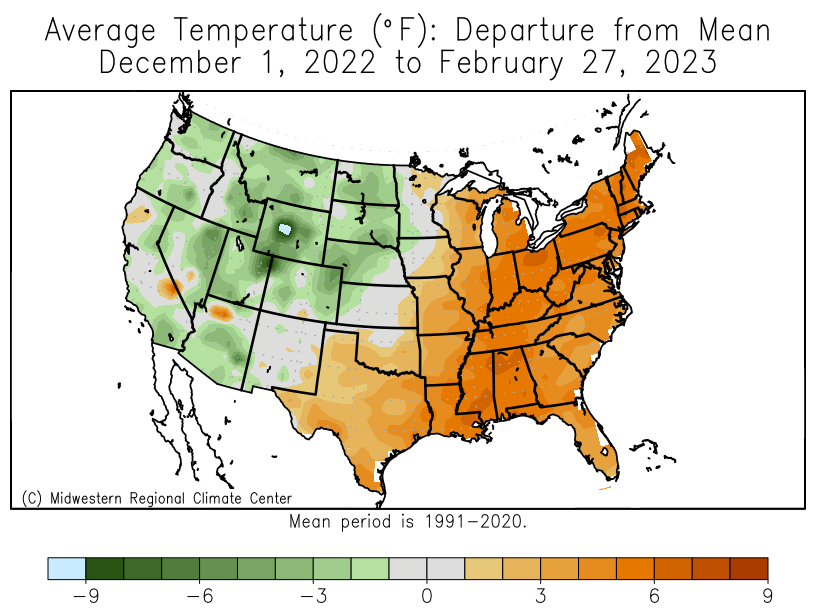
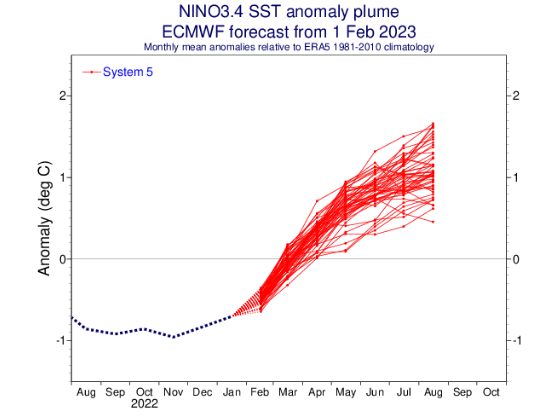
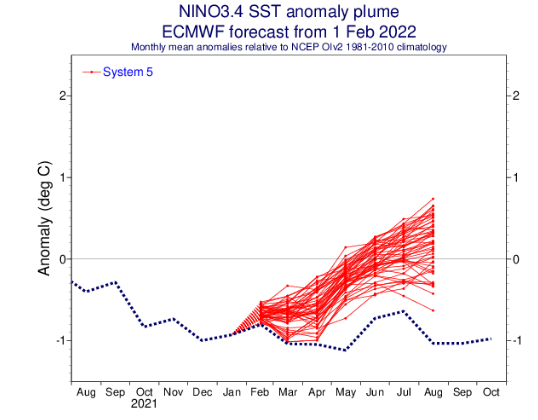

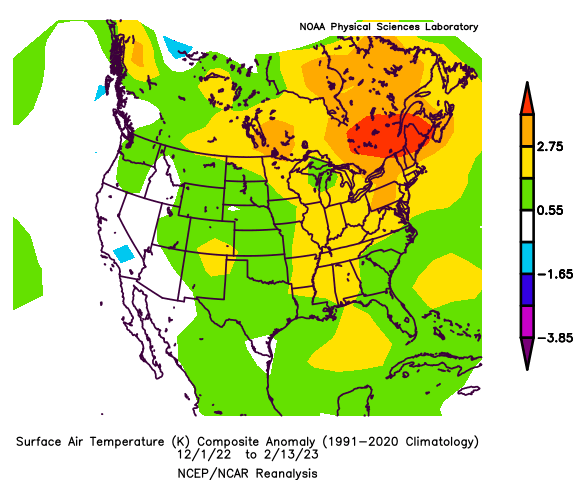

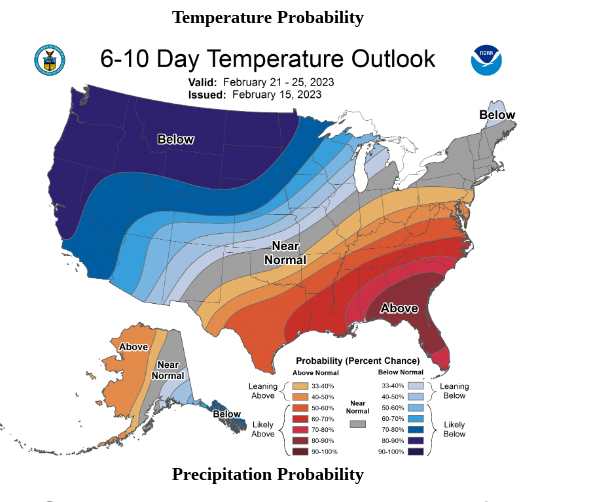
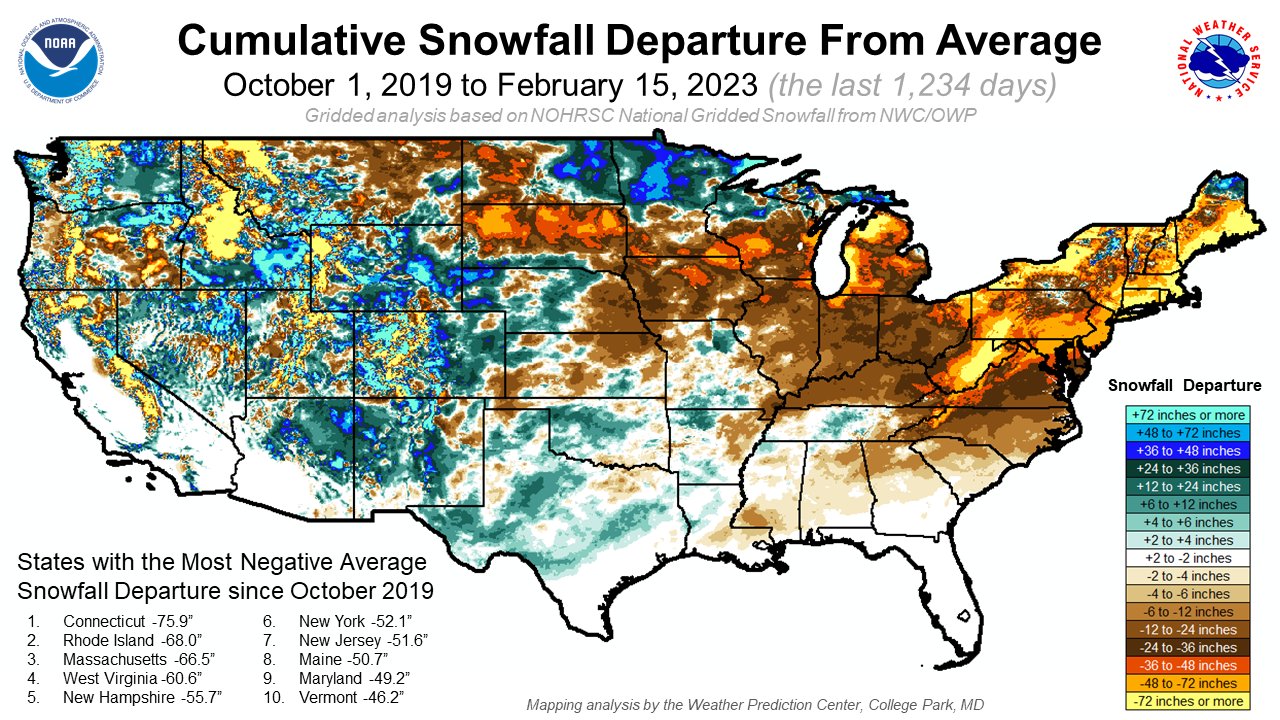



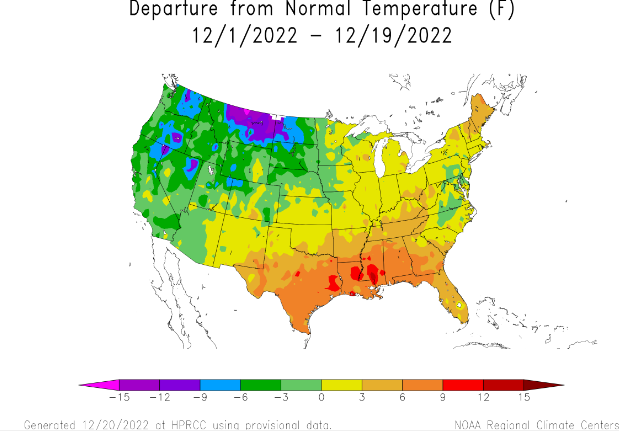
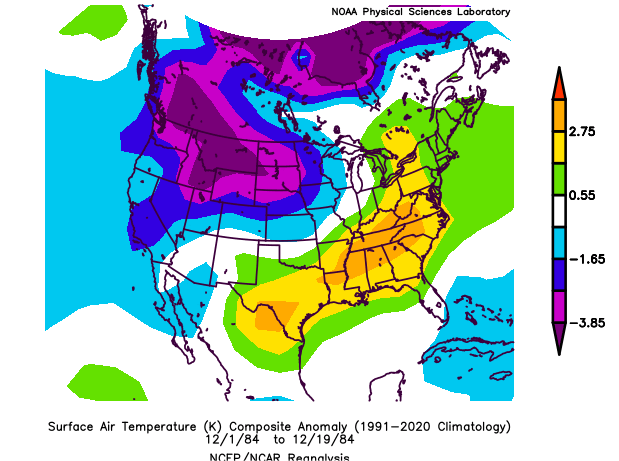
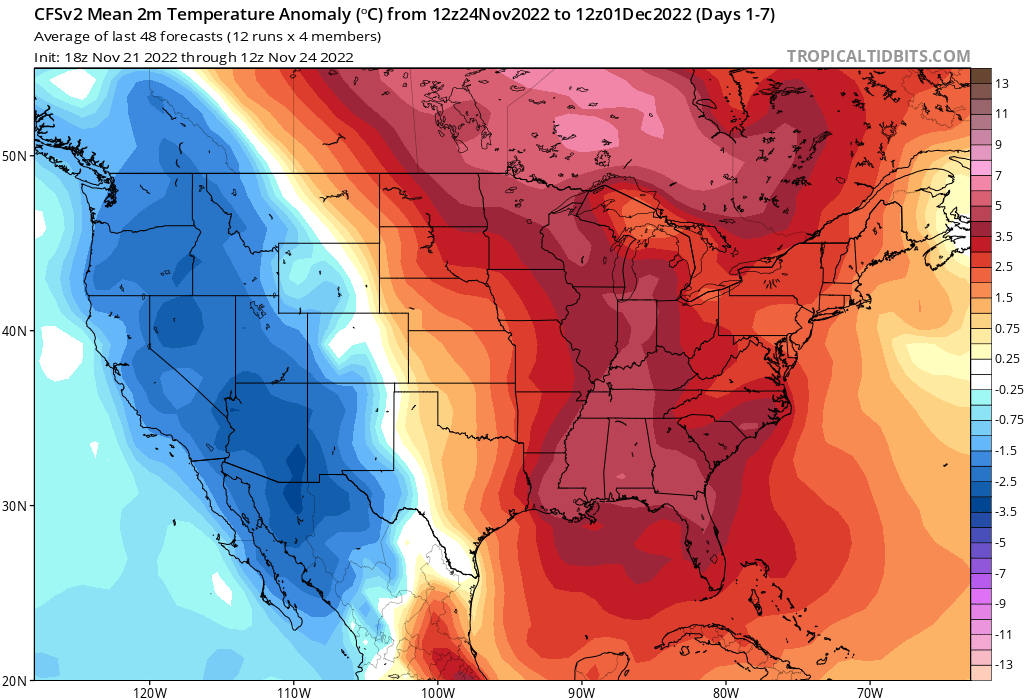
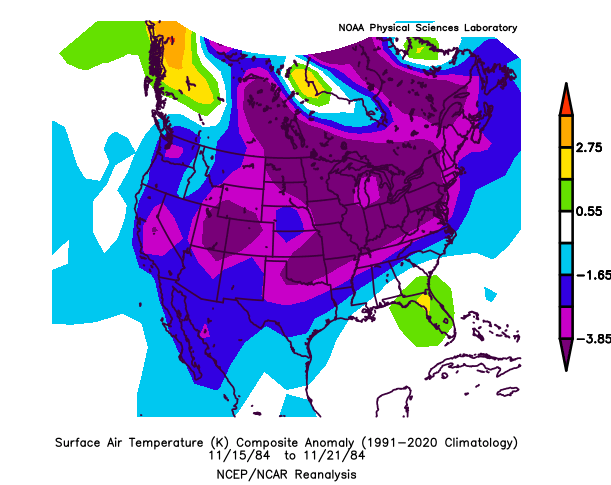
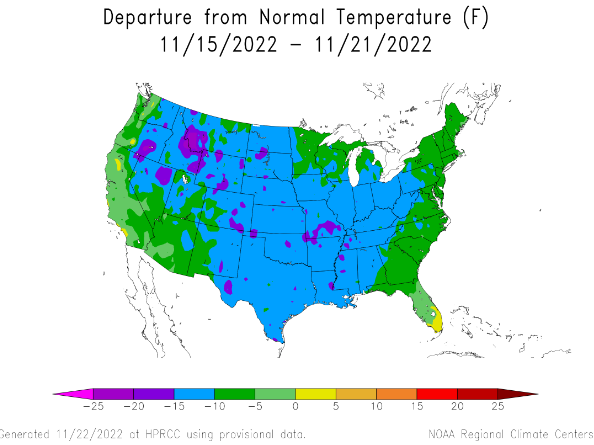
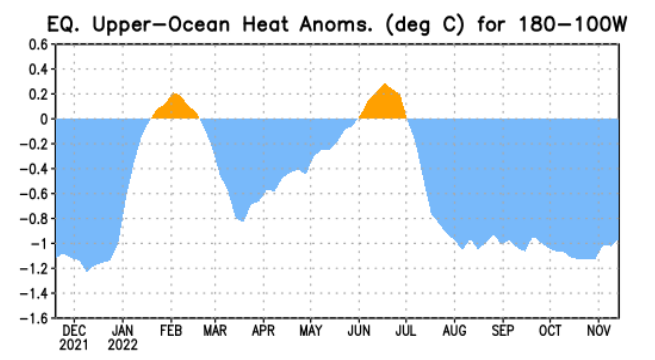

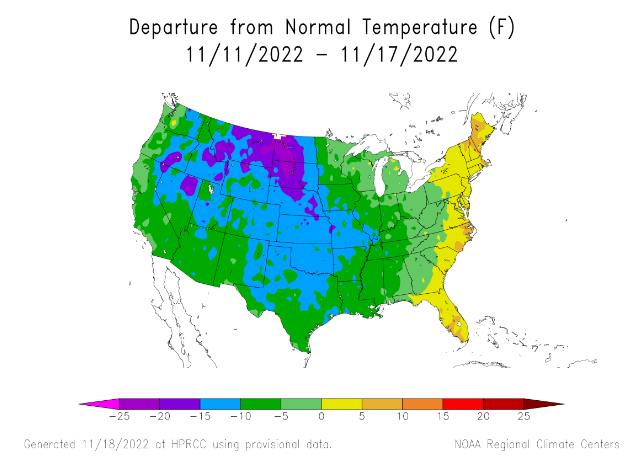
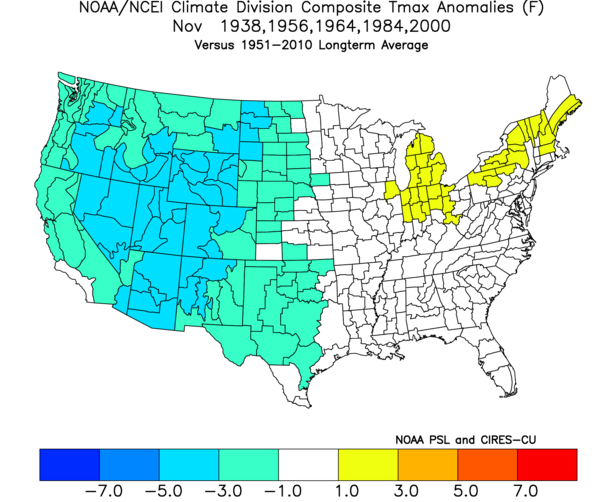
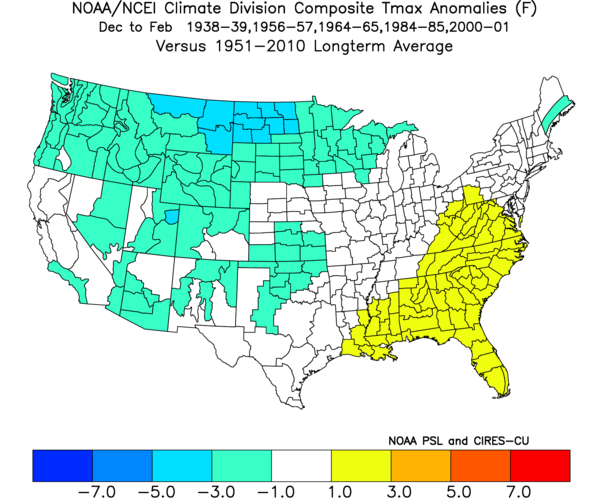
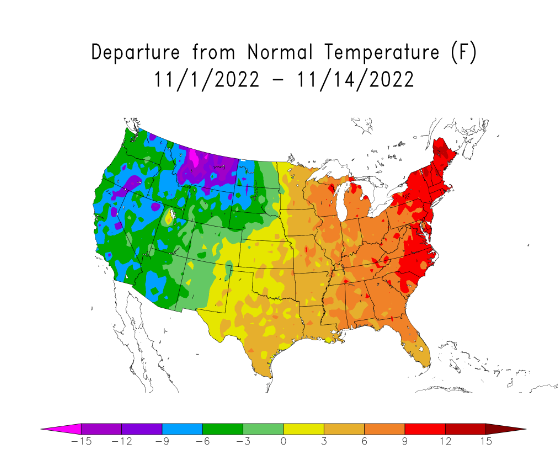

My Winter Outlook for 2022-23
in Weather Forecasting and Discussion
Posted
Eastern Atlantic didn't really do what I expected, but kind of irrelevant since the cold showed up consistently in the West via its partner in crime over NE Asia. I believe this is most +WPO winter on record using the index, but I'd have to check. I know it went super positive in February, which is when the pattern started to get real crazy for California, and it's a very strong warm signal in the East.
-WPO is basically mirror image of the winter.
https://www.worldclimateservice.com/2021/10/04/western-pacific-oscillation/#:~:text=The Western Pacific Oscillation is a pressure dipole that exists,than a week or two.